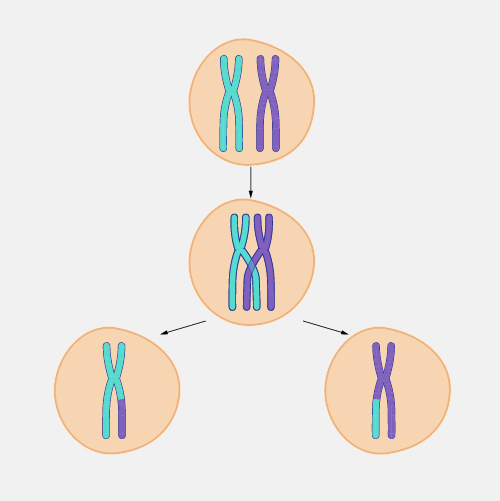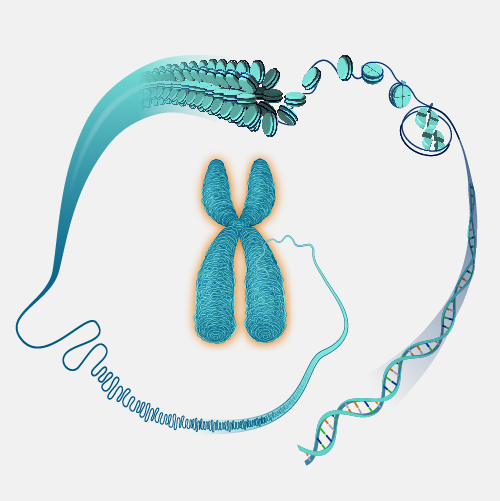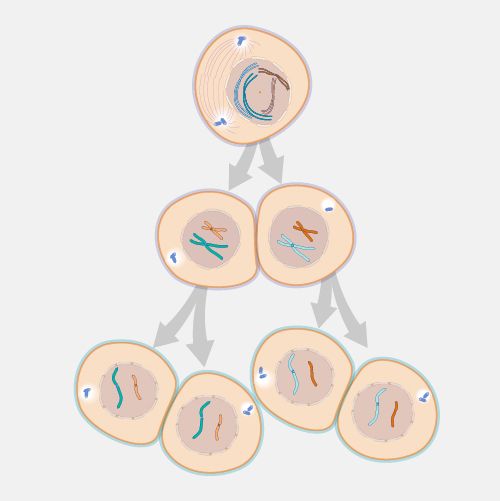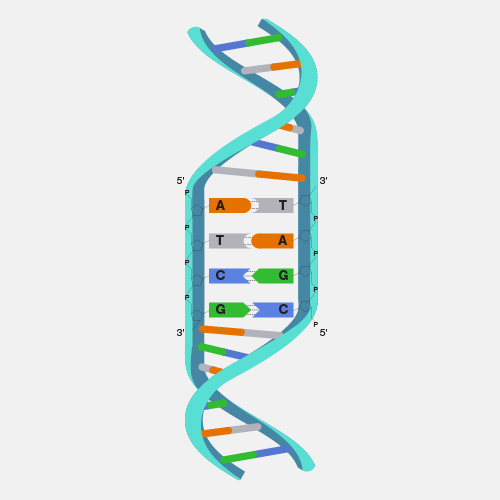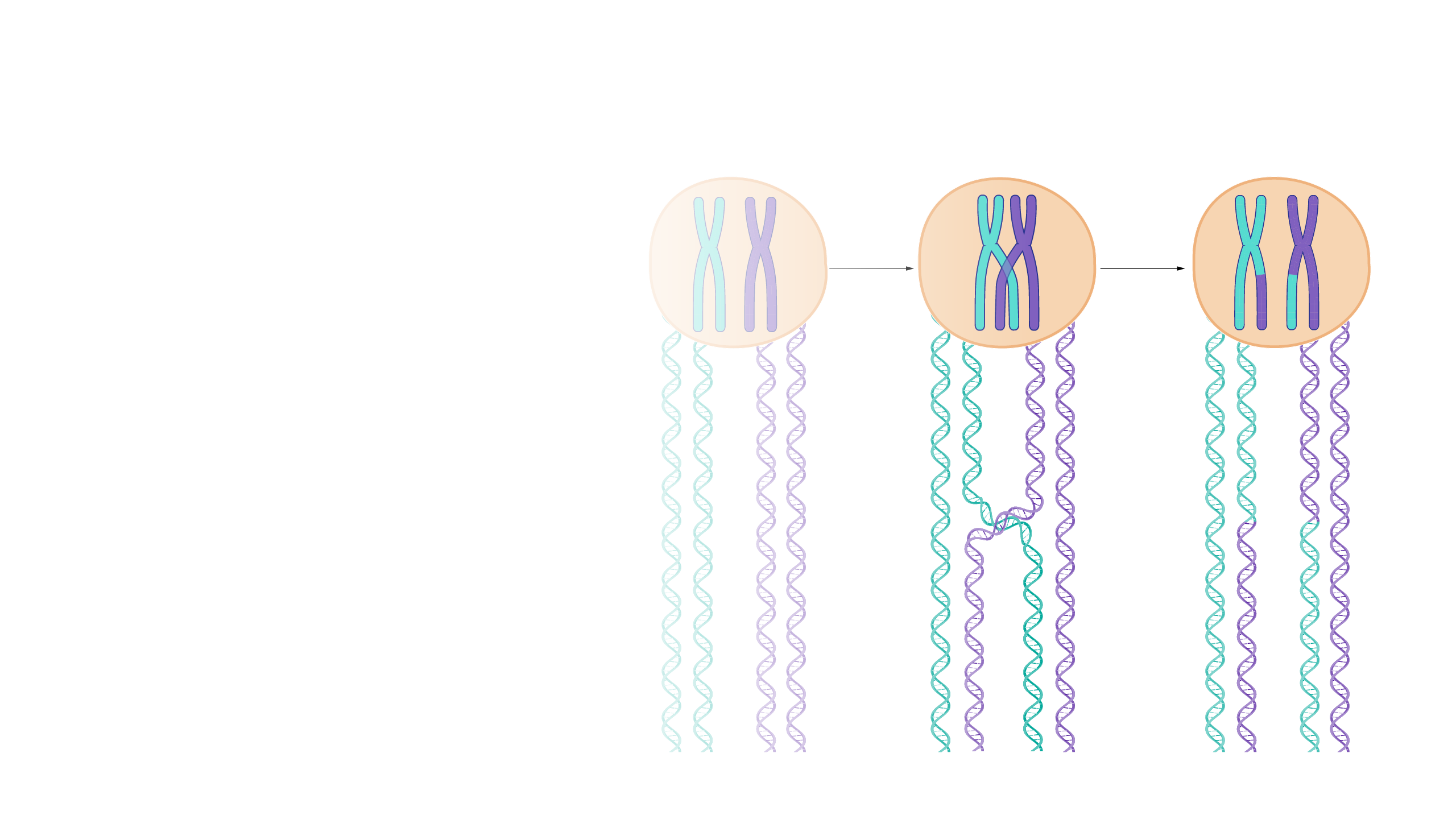
Homologous Recombination
Definition
Homologous recombination is a type of genetic recombination in which nucleotide sequences are exchanged between two similar or identical molecules of DNA. During the formation of egg and sperm cells (meiosis), paired chromosomes from the male and female parents align so that similar DNA sequences can cross over, or be exchanged, from one chromosome to the other. This exchanging of DNA is an important source of the genomic variation seen among offspring.
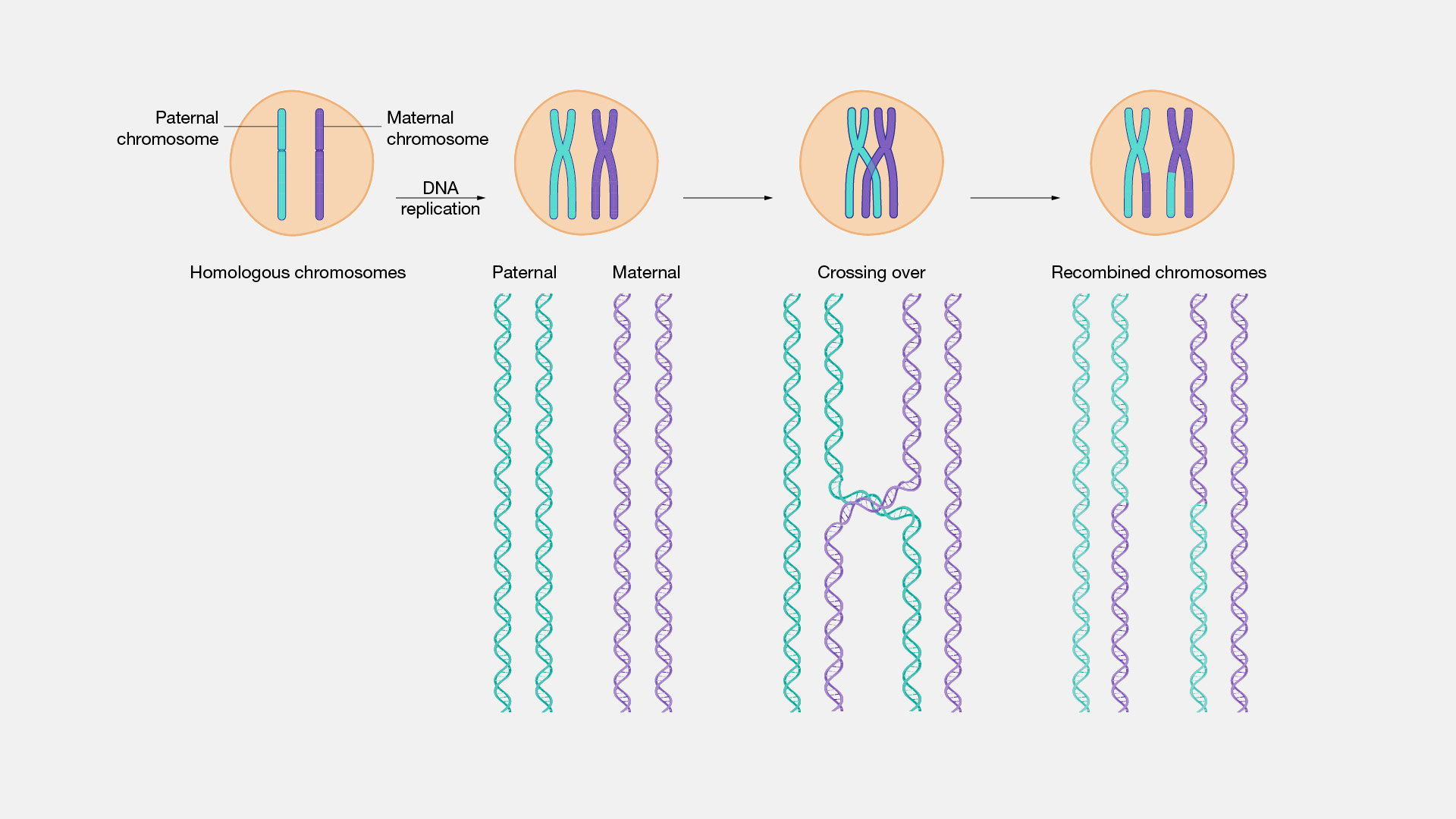
Narration
Homologous Recombination. Homologous recombination is a miraculous yet rather random process of gene shuffling that makes us who we are. Otherwise, we would all be like our parents. This is a type of genetic recombination that occurs during the formation of the egg and sperm cells. During this process, meiosis, what happens is that paired chromosomes from the male and female parent align so that similar DNA sequences from the paired chromosomes have an opportunity to flip-flop, or cross over one another. This crossing results in the shuffling of genetic materials, just like some gentle shuffling of a deck of cards. And it's important because it's one of the sources of genetic variation that we see among offspring of a set of parents. Thus, offspring receive bits of DNA from each of their parents, but also from their grandparents and ancestors.


